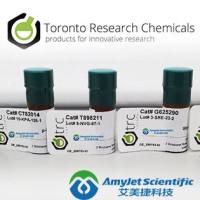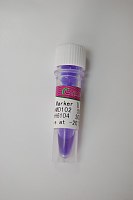DNA Methylation Analysis by Bisulfite Sequencing (BS)
互联网
Introduction
Genomic DNA methylation is one of the most important epigenetic modifications in eukaryotes. It is essential for life and its alteration is often associated with disease. In animals, most of the methylation occurs at the 5´ position of the pyrimidine ring of the cytosine. The resulting methylcytosine (mC) is mainly found in cytosine-guanine (CpG) dinucleotides. The presence of 5-mC in the promoter of specific genes alters the binding of transcriptional factors and other proteins to DNA and recruits methyl-DNA-binding proteins and histone deacetylases that compact the chromatin around the gene-transcription start site. Both mechanisms block transcription and cause gene silencing. Methylation of cytosine residues in genomic DNA plays a key role in the regulation of gene expression. There is an extensive range of methods based on the sodium bisulfite treatment for quantifying the methylation status of cytosines located in specific DNA regions. Bisulfite modification converts unmethylated cytosine to uracil, while methylated cytosine does not react (Figure 1). After denaturation and bisulfite modification, double-stranded DNA is obtained by primer extension and the fragment of interest is amplified by PCR.Back to top
Procedure
DNA Extraction from Frozen Tissue Sections
The following protocol is based on a standard phenol DNA extraction protocol. Other protocols and versions of this protocol are also acceptable.
Method
- Take pre-cut samples out of the -80°C freezer and thaw.
- Add 10 ml of PBS to dissolve OCT. Invert tube to make sure all of the tissue is in the solution and not stuck to the tube walls.
- Spin down tissue at 1,400 rpm (500 g) for 5 min.
- Remove supernatant carefully, watching the tissue pellet. (note 1)
- Resuspend pellet by vortexing. Add 950 µL digestion buffer (100 µL 10X PCR buffer [100 mM TRIS, 15 mM MgCl2 , 500 mM KCl), 5 µL 0.5% Tween 20, 845 µL H2O) and 30-50 µL of 20 mg/ml Proteinase K.
- Resuspend pellet by vortexing, and pipetting up and down and place in a 55°C shaking water bath overnight. The next day make sure all the tissue has been digested. If necessary, add more PK buffer and allow to digest for a few more hours.
- Add 500 µL (or equal volume) of room-temperature (RT) phenol/chloroform/isoamyl alcohol into each tube and vortex for 10 s.
- Centrifuge at 14,000 rpm (max) for 2 min at RT.
- Aliquot the aqueous phase into the minimum possible number of 1.5-ml Eppendorf tubes. Maximum volume per tube is 350 µL. Add 1/2 volume of 7.5 M ammonium acetate and mix.
- Add 2X 100% ethanol, mix by inversion. Leave at RT for 2 h, or overnight (ON) at �20°C.
- Centrifuge at 14,000 rpm for 15 min at 4°C.
- Decant supernatant immediately.
- Wash pellet in 70 µL of 100% ethanol. Spin at 14,000 rpm for 5 min and discard supernatant.
- Air-dry pellet.
- Add 20-50 µL of TE or MilliQ water. The volume will depend on the pellet. (~30 µL)
- Leave at RT for 2 h or ON.
- Store DNA at 4°C for short periods or colder for longer periods. Repeated freezing and thawing may lead to shearing of DNA into smaller pieces.
Treatment of genomic DNA with sodium bisulfite
Method
- Add 1 µg of DNA to a clean 1.5 ml Eppendorf tube and dilute to a final volume of 50 µL.
- Add 5.7 µL of 3 M NaOH to the DNA and incubate for 10 min at 37ºC.
- Add 33 µL of the hydroquinone solution (note 2) and 530 µL of NaHSO3 solution. (note 3)
- Incubate overnight (16-18 h) at 50ºC. (note 4) (comment 1)
- Purify the DNA using the Wizard DNA-clean up kit following the supplier’s instructions (Promega). (note 5)
- Add 5.7 µL of NaOH 3.0 M and incubate for 15-20 min at 37ºC.
- Precipitate the DNA adding a mixture with 1 µL of glycogen (10 mg/mL) solution, 17 µL of ammonium acetate solution and 450 µL of cold absolute ethanol.
- Incubate overnight (16-18 h) at -80ºC.
- Centrifuge (max rpm, 4ºC, 20 min). Discard the supernatant.
- Wash the pellet with 500 µL of cold EtOH 70%, centrifuge again and discard the supernatant.
- Dry the pellet at room temperature.
- Dissolve in 35-45 µL of water.
Cloning and bisulfite sequencing (BS) (Figure 2)
Sequencing bisulfite-altered DNA is the simplest means of detecting cytosine methylation. After denaturation and bisulfite modification, double-stranded DNA is obtained by primer extension and the fragment of interest is amplified by PCR. To optimize the PCR amplification step, the following critical requirements must be considered when designing the primers:
- First, the annealing temperature of both primers must be similar (+/- 3ºC) and always between 55 and 65ºC. (comment 2)
- Second, the PCR product should be between 200 and 400 bp. Bisulfite modification of the DNA produces a biased base composition that hinders the sequencing of long DNA fragments.
- Third, each primer must not contain CpG dinucleotides to avoid methylation-slanted clone amplification.
- Finally, in order to avoid amplification of unmodified DNA, primers should contain non-CpG cytosines.
Methylcytosine may then be detected by standard DNA sequencing of the PCR products. Cloning PCR products into plasmid vectors and then sequencing individual clones is an alternative method that, although slower, can yield methylation maps of single DNA molecules rather than the average values of the methylation status in the population of molecules obtained by directly sequencing the PCR products.
Method
- Design methylation-specific oligonucleotides using Methyl Primer Express Software (Applied Biosystems; https://products.appliedbiosystems.com/ab/en/US/adirect/ab?cmd=catNavigate2&catID=602121 following the references referring before (Figure 3). (comment 3)
- Add 4 µL of DNA, treated with sodium bisulfite in PCR tubes.
-
Combine (per reaction);
- 5 µL of 10X of Taq-polymerase-specific buffer
- 1.5 µL of 50 mM MgCl2
- 5 µL of 2 mM dNTPs
- 0.125 µL of each BS oligonucleotide (100 µM)
- 0.2 µL of FastStart Taq DNA Polymerase (comment 4)
- Sterile water up to a final volume of 46 µL
- Mix briefly by vortexing or pipetting.
-
Amplify DNA using the following PCR conditions:
- 1 cycle of denaturing: 5 min, 95ºC
- 40 cycles of denaturing: 30 s, 95ºC; annealing: 30 s, at a primer-specific annealing temperature; elongation: 45 s, 72ºC (comment 5)
- 1 cycle of 72ºC, 7 min
- Analyse the PCR products by mixing 50 µL of the reaction mix with 3 µL of 6X orange loading dye solution and resolving the sample by agarose gel electrophoresis alongside a DNA size marker.
- Extract and purify the PCR bands using QIAquick Gel Extraction Kit following the supplier’s instructions.
- Set up ligation reactions: Mix 3 µL of PCR purified product, 1 µL of plasmid, 1 µL of T4 ligase and 2.5 µL of reaction buffer.
- Mix the reactions by pipetting. Incubate the reactions for 1 h at room temperature. Alternatively, if the maximum number of transformants is required, incubate the reactions ON at 4°C. (comment 6)
-
Transformation in competent cells:
- Carefully transfer 50µL of cells into each prepared tube
- Gently flick the tubes to mix, then place them on ice for 20 min
- Heat-shock the cells for 45-50 s in a water bath at exactly 42°C (Do not shake)
- Immediately return the tubes to ice for 2 min
- Add 950 µL room-temperature SOC medium to the tubes containing cells transformed with ligation reactions.
- Incubate for 1.5 h at 37°C with shaking (~150 rpm).
- Plate 150 µL of each transformation culture onto LB/ampicillin/IPTG/X-Gal plates. The cells may be pelleted by centrifugation at 8,000 rpm for 1 min, resuspended in 150 µL of SOC medium.
- Incubate the plates overnight (16 - 24 hours) at 37°C.
- Longer incubations or storage of plates at 4°C (after ON incubation at 37°C) may be used to facilitate blue colour development. White colonies generally contain inserts.
-
Plasmid miniprep procedures (Millipore) to isolate the recombinant plasmid DNA:
- Inoculate clearly white colonies into 1,250 ml of 2X LB (with 1 µL of ampicillin per 1 ml of medium) in sterile 96-deep well blocks. Cover blocks with a sticker and lid and incubate at 37ºC at 320 rpm for 20-24 h
- Centrifuge the blocks at 1,200 rpm for 10 min
- Discard the supernatant
- Add 200 µL of water
- Vortex until the pellet is resuspended
- Centrifuge the blocks at 1,200 rpm for 10 min
- Discard the supernatant
- Add 100 µL of solution 1 (stored at 4ºC)
- Vortex until the pellet is resuspended
- Add 100 µL of solution 2 (note 6)
- Vortex for 1 min
- Incubate for 2 min at room temperature
- Add 100 µL of solution 3
- Vortex for 2 min (note 7)
- Centrifuge the blocks at 1,200 rpm for 10 min.
- Transfer the supernatant to the CLEARING plate (be careful with the pellet)
- Place the PLASMID plate inside the vacuum manifold
- Place the CLEARING plate on top of the vacuum manifold
- Adjust the vacuum to 8 inches of Hg and wait until the supernatant has fallen in the PLASMID plate
- Discard the CLEARING plate
- Place the PLASMID plate on top of the empty manifold and apply vacuum at 24 inches of Hg and wait until the wells are empty.
- Add 200 µL of buffer 4.
- Apply vacuum at 24 inches of Hg and wait until the wells are empty.
- Close the vacuum system.
- Add 50 µL of buffer 5 (at 65ºC)
- Shake for 1 h
- Transfer to a flat-bottomed 96-well plate.
-
Using the purified recombinant plasmid DNA as templates, perform a cycle-sequencing reaction using the BigDye Terminator Version 3.1 Kit (Applied Biosystems). Combine (per reaction):
- 5 µL of DNA template
- 1.5 µL of reaction mix
- 3 µL of reaction Buffer 5X
- 1.5 µL of T7 primer (10 µM)
- 4 µL sterile water
-
Mix briefly by vortexing or pipetting and amplify DNA using the following PCR conditions:
- 1 cycle of denaturing: 1 min, 96ºC
- 30 cycles: 10 s, 96ºC; 5 s, 50 s; 4 min, 55ºC
- 1 cycle of 4ºC, 10 min
- Perform sequencing using an ABI Prism 3130XL Applied Biosystems DNA sequencer or similar. (note 8)
- Analyze the methylation data in the corresponding software platform (Sequencing Analysis Software) (Figure 4). (comment 7)
[1] [2] 下一页
![[(3R,4aR,5S,6S,6aS,10S,10aR,10bS)-3-ethenyl-10,10b-dihydroxy-3,4a,7,7,10a-pentamethyl-1-oxo-6-(2-pyridin-2-ylethylcarbamoyloxy)-5,6,6a,8,9,10-hexahydro-2H-benzo[f]chromen-5-yl] acetate,Moligand™,阿拉丁](https://img1.dxycdn.com/p/s14/2024/0619/722/0483842343985733081.jpg!wh200)



![(1S,2R,4aS,6aR,6aR,6bR,8aR,10S,12aR,14bS)-10-hydroxy-6a-[(E)-4-(4-hydroxyphenyl)-2-oxobut-3-enyl]-1,2,6b,9,9,12a-hexamethyl-2,3,4,5,6,6a,7,8,8a,10,11,12,13,14b-tetradecahydro-1H-picene-4a-carboxylic acid,Moligand™,阿拉丁](https://img1.dxycdn.com/p/s14/2024/0619/790/2703698211716733081.jpg!wh200)


